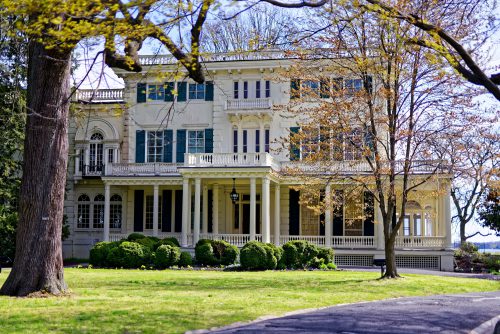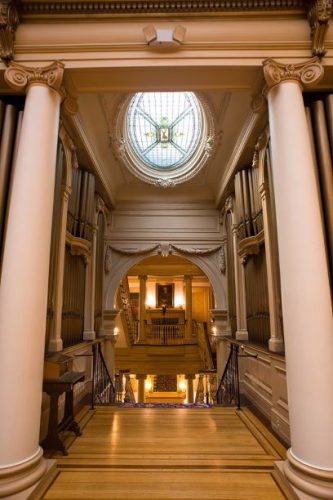Charles Macalester - (Ownership 1850-1873)
In 1850, Macalester purchased land in northeastern Philadelphia. He divided, plotted, and sold off large plots of his land, holding onto one section for a summer residence that was called Glengarry. Charles Macalester hosted many gala affairs at Glengarry and he continued residence until his death in 1873. The Glen Foerd estate was established by Charles Macalester, Jr. Born in Philadelphia in 1798, he was a respected businessman and broker in the Philadelphia firm of Gaw, Macalester and Company. In addition, Macalester was appointed government director of the Second Bank of the United States. He was also friend, and advisor to numerous United States presidents. Officer and cabinet posts were offered to him, but he preferred to remain independent.
In 1850, Macalester purchased 1,000 acres in northeastern Philadelphia and divided, plotted and sold off large lots of his land. Holding onto one section of the land for a summer residence, he built a three story Italianate riverfront house and called it Glengarry, after his family’s Scottish ancestral home. In addition to the mansion, the estate consisted of a stone gas house, ice house, Gothic-style gatehouse, a sixty foot high stone water tower, five large greenhouses and riverfront cupola.
Glengarry was the scene of many gala affairs. During the summer, heads of state and other dignitaries traveled from Washington, D.C., where Macalester maintained a residence, as guests of Macalester and his daughter, Lily Macalester Laughton, a famous Washington hostess. After her father’s death, in 1873, Lily continued residence at Glengarry until her death in 1891.
Robert Foerderer - (Ownership 1895-1903)
In 1895, the mansion was purchased by Robert and Caroline Foerderer. They hired William McAuley to renovate the mansion and renamed the estate to Glen Foerd. Robert Foerderer died in 1903 and he had not yet moved back to Glen Foerd due to the ongoing renovations. In 1895, the mansion was purchased by Robert and Caroline Foerderer. Robert made his fortune in the manufacture of kidskin leather. Leather gloves, shoes and other clothing accessories made from the soft, supple leather was the height of fashion. His Philadelphia manufacturing enterprise employed 5,000 workers and processed nine million goat skins a year.
After purchasing the estate, Foerderer hired architect, William McAuley of Philadelphia, to handle extensive renovations to the mansion. The house was enlarged and enhanced with Classical Revival additions. Additions included a porte cochere, formal dining room, and impressive art gallery. Other enhancements included a Haskell pipe organ, parquet floors, grand staircase, elaborate leaded glass skylights, and rathskellar. A carriage house and garden house was added at this time, and the gas house was converted for use as a boat house. Everything was planned to enhance the uniqueness and beauty of the home and to accommodate entertainment on a grand scale. As a final touch, they changed the name of the estate to Glen Foerd, a merger of Glengarry and the Foerderer name. Due to the elaborate renovation design and labor delays, the Foerderers had not yet moved back into the mansion when Robert died in 1903. The Foerderers had two grown children at the time of his death, Percival and Florence.


